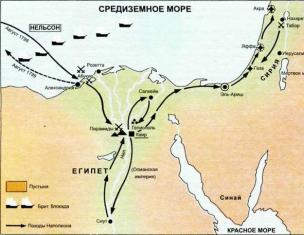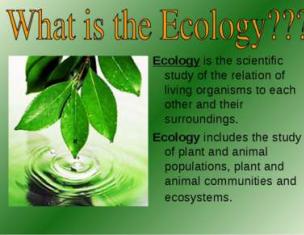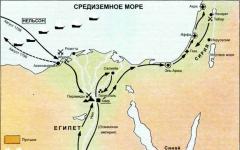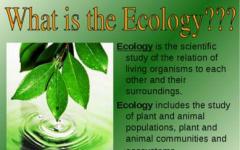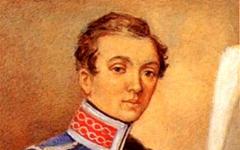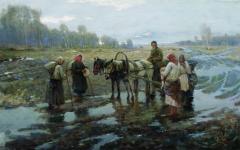Cogito ergo sum! “I think, therefore I exist,” said Rene Descartes. Let's sort it out theoretical aspect the relationship between thinking and human activity, expressed in activity.
Thinking and activity. Analysis of the topic of the Unified State Examination codifier
For classes in a site group  #5_Thinking_and_activity
#5_Thinking_and_activity
Activity is a human form of activity aimed at transforming the environment.
Activity structure:
😼Motive is an incentive to activity associated with satisfaction.
💭A goal is a conscious, anticipated goal towards which it is aimed
✒A means is techniques, methods of action, objects. Actions are a manifestation of the will of people.
🏁 The result is the final result that completes the activity.
🏃The subject is the one who carries out the activity:
🍃An object is what the activity of an object or the entire surrounding world is aimed at
Motives for activity:
🔆Needs are the need a person experiences for what is necessary for life and development.
🔆Social attitudes are a person’s orientation towards something.
🔆Beliefs are emotional and valuable attitudes towards reality.
🔆Interests are the real reason for action behind
🔆Attractions are mental states that express an unconscious (insufficiently conscious need).
Thinking and activity are the main categories that distinguish man from the animal world. Thinking and transformative activity are inherent only in man.

📌Thinking is a function human brain, arising as a result of it nervous activity. However, thinking cannot be completely explained solely by the activity of the brain. Mental activity is connected not only with biological but also with social development, as well as with speech and human development. Forms of thinking:
📌Thinking is characterized by such processes as:
analysis(decomposition of concepts into parts),
synthesis(combining facts into a concept),
abstraction(distraction from the properties of an object when studying it, evaluating it “from the outside”),
setting tasks,
finding ways to solve them,
hypothesizing(assumptions) and ideas.
It is inextricably linked with the results of thinking that are reflected in Speech and thinking have similar logical and grammatical structures, they are interconnected and interdependent. Not everyone notices that when a person thinks, he speaks his thoughts to himself and conducts an internal dialogue.

This fact confirms the relationship between thinking and speech.
Video lecture on the topic “Natural and social in man. Thinking and activity" from Unified State Exam expert you can get by subscribing to a free mini-video course on the basic Unified State Exam topics in social studies.
Online essay group topic
1.5 Thinking and activity Bogbaz10, §5, 46 – 47; 48 – 53; Bogprof10, §8, 85-88 ( social essence activities, thinking and activity, thinking and language); Bogprof10, §17, 168-171 (structure of activity), 174 (types of activity).
Thinking
The means of thinking is language.
Types of thinking .
1) Imaginative thinking. The task is given clearly, in specific form. The way to solve it will be practical action. characteristic to primitive man
2) Conceptual (theoretical) thinking. The task is posed as theoretical. The way to solve it is to use abstract concepts and theoretical knowledge. characteristic to modern man.
3) Sign thinking. Caused by insight into the human worldview exact sciences. Knowledge exists in linguistic signs (signs-signals, sign-signs), which have a cognitive image of certain phenomena as their meaning. Science is increasingly using symbolism as a means of expressing the results of mental activity.
.
1) The presence of a need (material or spiritual) to understand, learn, explain something.
2) Formulation of the task (question)
3) Solving a given problem (i.e. the thought process) using methods of analysis and synthesis, through various mental operations
Forms of thinking :
1) conceptual; 2) associative-figurative; 3) verbal-speech; 4) activity-instrumental.
Deyaactivity is a form of human activity aimed at transforming the world around him.
Activity structures:
An object is something towards which an activity is directed.
The subject is the one who implements it.
A goal is an ideal image of the result that the subject seeks to obtain.
Means to achieve it
Result
The main motive that motivates a person to act is his desire to satisfy his needs.
Needs:
Physiological
Social
Ideal
Types of activities:
Practical activity (transformation of objects of nature and society that exist in reality).
Material and production
Socially transformative
Cognitive
Value-oriented
Spiritual (changing people's consciousness)
Prognostic
Activity can be constructive or destructive.
Communication is a process of information exchange between equal subjects of activity.
Types of communication:
Communication between real subjects (between two people).
Communication between a real subject and an illusory partner (a person with an animal, which he endows with some unusual qualities).
Communication of a real subject with an imaginary partner (this means communication of a person with his inner voice).
Communication between imaginary partners (literary characters).
Forms of communication:
Monologue or remarks.
Communication is a process of interaction between two or more entities for the purpose of transmitting information.
Details
7.1. Activity.
7.1.1. What is human activity?
7.1.2. Differences between human activities and animal behavior.
7.1.3. Activity structure:
7.1.4. Types of activities.
7.1.5. Creation.
7.2. Thinking.
7.2.1. What is thinking?
7.2.2. Types of thinking.
7.2.3. Forms of thinking:
7.2.4. Thinking and language.
7.2.5. Stages of mental activity.
7.3. Activity or vanity of vanities ?
7.1 . Activity.
7.1.1. What is human activity?
Activity– specifically human form active attitude to the surrounding world, its expedient change and transformation.
7.1.2. Differences between human activities and animal behavior.
Human activity:
1) adaptation to natural environment through its large-scale transformation, the creation of an artificial environment for human existence;
2) goal setting in activity;
3) conscious setting of goals related to the ability to analyze the situation;
4) impact on the environment with special means of labor, the creation of artificial objects that enhance human physical abilities (the ability to make tools for making tools);
5) the creative nature of the activity;
6) the ability to think abstractly and express the content and results of one’s thinking in articulate speech.
Animal behavior:
1) adaptation to environmental conditions by restructuring one’s own body (mutation);
2) expediency in behavior;
4) impact on nature only by body organs;
5) consumer nature - they do not create anything new, they only use what was originally given by nature.
How work activity human differs from the “labor” of animals?
Activity- This is a specifically human form of interaction with the outside world. In the process of activity, a person learns about the world, creates the conditions necessary for his own existence (food, clothing, housing, etc.), spiritual products (for example, science, literature, music, painting), as well as himself (his will, character, abilities) .An integral feature of activity is its 1) awareness. Its other characteristics include 2) productivity, 3) transformative and 4) public character.
Many actions performed by animals superficially resemble the labor actions of people. For example, beavers, like people, build dams on rivers; birds build nests. Animals teach their young to hunt and get food. Many people are stocking up for the winter. And bees and ants are sometimes even called “social animals”, since they act together and their joint actions are distinguished by a clear organization and distribution of “roles”.
3) People are driven by conscious motives and consciously put forward goals of activity, and the behavior of animals is purely instinctive. Animal behavior is not associated with independent goal setting and meaningful acceptance. The problems that animals “solve” confront them objectively, and the method of solving them is inherited by one generation of animals after another. Not a single animal is able to invent its own, original, different from the existing one, way of solving a particular problem. An animal cannot go beyond the biological program of its actions. In work activity, a person consciously puts forward a goal, chooses rational ways to achieve it, and resorts to creative solutions. 4) The ability to work together is mistakenly considered by many to be an ability characteristic of both humans and animals. But if we remember that animals act and do not work, that they are driven by instincts, unconditioned reflexes, and not consciously set goals and volitional efforts, we can unequivocally state that work is a type of activity characteristic only of man.
7.1.2. Activity structure:
2) funds;
3) products (results);
4) motives;
5) actions.
7.1.3. Types of activities.
Classification No. 1 (by content):
2) teaching (study, knowledge);
4) communication.
Work– an activity that is aimed at achieving a practically useful result.
Features of work activity: expediency; focus on achieving expected results; availability of knowledge, skills, abilities; practical usefulness; obtaining a result; transformation external environment habitat.
Teaching– activities aimed at acquiring knowledge, skills and abilities by a person.
Teaching can be organized (in educational institutions) and unorganized (by-product, additional result of other activities).
Game- activities that are focused not so much on concrete result, how much for the game process itself.
Peculiarities play activity : occurs in a conditional situation; so-called substitute items are used; aims to satisfy the interests of its participants; promotes personality development.
Communication– 1) establishment and development of mutual relations, contacts between people; 2) a type of activity in which ideas and emotions are exchanged.
How do activities and communication relate?? (point of view):
1) Communication is an element of any activity, and activity is a necessary condition for communication; an equal sign can be put between them.
2) Communication is one of the types of human activity along with play, work, etc.
3) Communication and activity are different categories, two sides social existence of a person: work activity can occur without communication, and communication can exist without activity.
Communication and communication.
Communication – communication, exchange of information between people.
Differences:
1) Recipient of information: communication – person; communication – person, animal, machine.
2) nature of exchange: communication: mutual exchange with the active participation of each subject; communication: unidirectional flow of information with a formal nature feedback.
3) Consequences: communication: the community of participants is enhanced; communication: participants remain isolated.
Types of communication.
By means of communication used:
1) direct – with the help of natural organs;
2) indirect – using special means (newspaper or CD);
3) direct – personal contacts and direct perception of each other;
4) indirect - through intermediaries who can be other people.
By subjects of communication:
1) between real subjects;
2) between a real subject and an illusory partner, to whom the qualities of a subject of communication are attributed;
3) between a real subject and an imaginary partner (“inner voice”);
4) between imaginary partners ( artistic image).
Communication functions:
1) socialization;
2) educational;
3) psychological;
4) identification (an expression of a person’s involvement in a group: “I am one of my own” or “I am a stranger”);
5) organizational.
Classification No. 2 (by objects and results of activities):
1) practical: material and production (transformation of nature), social and transformational (transformation of nature);
2) spiritual (cognitive, value-oriented, prognostic).
Classification No. 3 (according to the nature of the consequences):
1) creative;
2) destructive.
7.1.4. Creation.
Creation- an activity that generates something 1) qualitatively 2) new, never before existing or active, 3) the development of an already existing wealth of culture that meets the needs of the time.
Creativity is a synthetic type of human activity that combines new, top level some elements as pre-labor instinctive activity people (internal motivation for activity) and work (awareness of the goals of activity).
Mechanisms creative activity :
1) combining, varying existing knowledge, known methods actions;
2) imagination;
3) fantasy;
4) intuition.
7.2 . Thinking.
7.2.1. What is thinking?
Thinking – active process reflections of the objective world in concepts, judgments, theories, etc.
The biological basis of thinking is the human brain.
The means of thinking is language.
The basis of thinking is sensory experience, which is transformed in thinking through its generalization, identifying the necessary features and properties of objects.
7.2.2. Types of thinking.
Thinking is a complex socio-historical phenomenon. Its development is characterized by increased abstraction and generalization.
The peculiarities of thinking of primitive man differ from modern man in their sensual concreteness and objectivity versus great generalizing abilities. On different stages human development, his mental abilities dominated different types thinking:
1) Imaginative thinking. The task is presented clearly, in a specific form. The way to solve it will be practical action. Characteristic of primitive man and people of the first earthly civilizations.
2) Conceptual (theoretical) thinking. The task is posed as theoretical. The way to solve it will be to use abstract concepts and theoretical knowledge. Characteristic of modern man.
3) Sign thinking. Due to the penetration into the human worldview of the exact sciences and their formalized knowledge, artificial, signed languages. Knowledge exists in linguistic signs (signs-signals, sign-signs), which as their meaning have a cognitive image of certain phenomena, processes of objective reality. Science is increasingly using symbolism as a means of expressing the results of mental activity.
In their pure form, certain types of thinking are difficult to notice. It is advisable to talk about the predominance of one type or another. In the process of thinking, a person gradually discovered an increasing number of laws in the world around him, i.e. essential, repeating, stable connections between things. Having formulated the laws, man began to use them in further knowledge, which gave him the opportunity to actively influence nature and social life.
7.2.2. Forms of thinking:
2) associative-figurative;
3) verbal-speech;
4) activity-instrumental.
7.2.3. Thinking and language.
Thinking is inextricably linked with language. A person's thoughts are expressed in language. With its help, a person understands the objective world. This happens because language somehow corresponds to the objects of reality, their properties and relationships. In other words, there are elements in the language that replace named objects. They play the role of representatives of objects of knowledge in thinking; they are signs of objects, properties or relationships.
7.2.4. Stages of mental activity.
Despite the fact that thinking is a process that occurs in the cerebral cortex, it is social in nature. To formulate and solve any problem, a person uses laws, rules, and concepts that were discovered in human practice. The thinking process goes through a number of stages:
1) The presence of a need (material or spiritual) or the need to understand, learn, explain something. The presence of interest in the new, unknown that a person has noticed in the surrounding reality. The ability to identify the new and unusual from the known. The desire to learn, understand, reveal this new, unfamiliar.
2) Formulating a task (question) – defining the subject of thinking and the direction of the thought process.
3) Solving the given problem (i.e. the thought process) using methods of analysis and synthesis, through various mental operations: comparison, classification, systematization, generalization, abstraction, concretization.
4) Achieving new knowledge that a person did not possess before.
7.3 . Activity or vanity of vanities?
In terms of his activity, man is excessive; he produces a lot of things that are completely unnecessary to him. Perhaps this redundancy is one of the reasons for the environmental absurdity in which we find ourselves today. It is known that only 2% of students natural resources are directly related to the satisfaction of vital human needs. Everything else is ultimately a dump of trinkets, decorations and crazy technologies aimed at satisfying human vanity.
Thinking– an active process of reflecting the objective world in concepts, judgments, theories, etc.
Despite the fact that thinking is a process that takes place in the human cerebral cortex, it is by its nature socially. After all, to formulate and solve any problem, a person uses laws, rules, concepts that were discovered in human practice.
Thinking is inextricably linked with tongue. A person's thoughts are expressed in language. With its help, a person understands the objective world. This happens because language somehow corresponds to the objects of reality, their properties and relationships. In other words, there are elements in the language that replace named objects. They play the role of representatives of objects of knowledge in thinking; they are signs of objects, properties or relationships.
Indirect character thinking lies in the fact that a cognizing person, with the help of thinking, penetrates into the hidden properties, connections, relationships of objects.
The thinking process goes through a number of stages.

Thinking has personal character. This is manifested in what tasks attract the attention of a particular person, how he solves each of them, and what feelings he experiences when solving them. The subjective aspect appears in the relationship a person has to what he learns, and in the conditions in which this process takes place, and in the perfection of the methods used, and in the wealth of knowledge and the success of its application.
A distinctive feature of mental activity is the inclusion in this process emotional-volitional sides of personality, which manifest themselves: in the form motives, the motives for which a person undertakes difficult mental work; in the form reactions on a discovery made, a solution found or a failure experienced (joy, pride, self-confidence; annoyance, grief, despondency, apathy, etc.); in the attitude that a person experiences towards the content of the task itself.
Thinking is complex socio-historical phenomenon. Its development is characterized by increased abstraction and generalization.

At different stages of human development and his mental abilities, different types of thinking dominated.

In their pure form, certain types of thinking are difficult to notice. It is advisable to talk about the predominance of one type or another.
In the process of thinking, a person gradually discovered an increasing number of laws in the world around him, i.e. essential, repeating, stable connections between things. Having formulated the laws, man began to use them in further knowledge, which gave him the opportunity to actively influence nature and social life.
Sample assignment
B2. Below is a list of terms. All of them, with the exception of one, are associated with the concept of “thinking”.
Image; language; performance; temperament; sign.
Find and indicate a term that is not related to the concept of “thinking”.
Answer: Temperament.
Thinking and activity
compiled by: Yakovenko Olga Igorevna
history and social studies teacher
MBOU school No. 1, Anuchino village

Thinking is an active process of reflecting the objective world in concepts, judgments, theories, etc.
Thinking
social by nature
inextricably linked with language

Thinking process
Stage I – Formulation of the task (question)
Stage II – Solving the problem
Stage III – Achieving new knowledge
Thinking is personal

At different stages of human development and his mental abilities, different types of thinking dominated.
Types of thinking
figurative iconic
conceptual
(theoretical)

Activity is a person’s way of relating to to the outside world, consisting in the transformation and subordination of man to his goals.
Main Components
activities
activities
activities
– is the one who carries out the activity (person, team, society)
- this is what the activity is aimed at (object, process, phenomenon, internal state person)

Motive is a set of external and internal conditions that cause the activity of the subject and determine the direction of activity.
Motives may include:
- Needs
- Social attitudes
- Beliefs
- Interests
- Attractions and emotions
- Ideals


Types of activities


Labor is a type of activity that is aimed at achieving a practically useful result.
Characteristic features of work:
- Feasibility
- Focus on achieving programmed expected results
- Availability of skills, abilities, knowledge
- Practical usefulness
- Availability of result
- Personality development
- Transformation of the external human environment.

- By objects and results
- By subject of activity: individual and collective
- By nature of activity: reproductive and creative
- According to legal norms: legal and illegal.
- According to moral standards: moral and immoral.
- In relation to social progress: progressive and reactionary.
- Depending on the areas public life: economic, social, political and spiritual.
- According to the characteristics of the manifestation of human activity: external and internal.

Creativity is a type of activity that generates something qualitatively new, something that has never existed before.
The most important components of creative activity:
- Combining, varying existing knowledge.
- Imagination
- Fantasy
- Intuition

Characteristic features of the activity
Social character
Conscious character
Transformative character
Productive character

Answer the questions

- transformative
- adaptive
- collective
- gun

- mandatory use of tools
- dominance of biological needs
- conscious goal setting
- instinctive adaptation to the environment

- prognostic
- socially transformative
- value-oriented
- educational

- prognostic
- value-oriented
- educational

- material and production
- educational and cognitive
- value-oriented

- socially transformative
- educational
- value-oriented
- prognostic

- creativity
- having a partner
- presence of interest
- following certain rules and regulations

- cognition
- communication
- forecasting

- gaming skills of younger schoolchildren
- high school students conducting classes
- computers used for training
- computer games

- advice and recommendations from parents
- beds with cucumbers
- older teenagers
- tools and garden equipment

- objects of activity
- subjects of activity
- goals of activity
- means of activity

- means of activity
- subject of activity
- motive of activity
- means of activity

- object
- item
- means
- subject

- objects of activity
- subjects of activity
- goals of activity
- means of activity

- theatrical performance
- theater troupe
- scenery
- drama theater

Match
DEFINITION
ELEMENT OF ACTIVITY STRUCTURE
A) the one who carries out
activity
1) object of activity
B) realized result
activities
2) purpose of activity
C) what the activity is for
directed
3) subject of activity
Write down the selected numbers in the table under the corresponding letters


